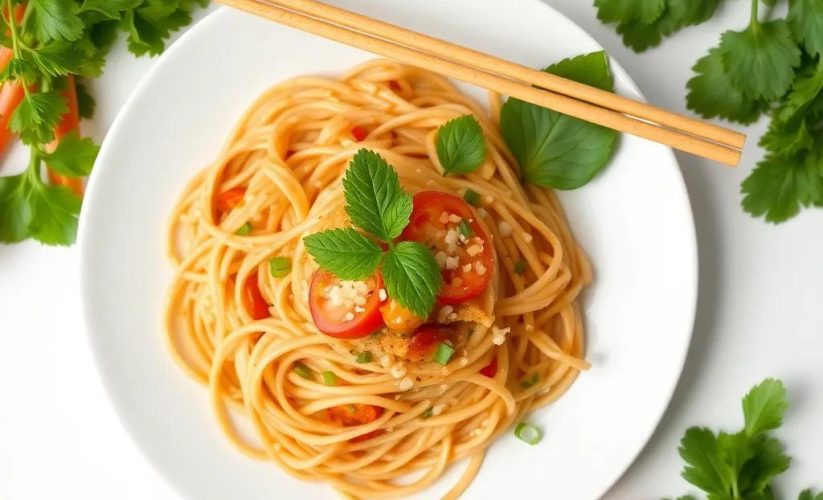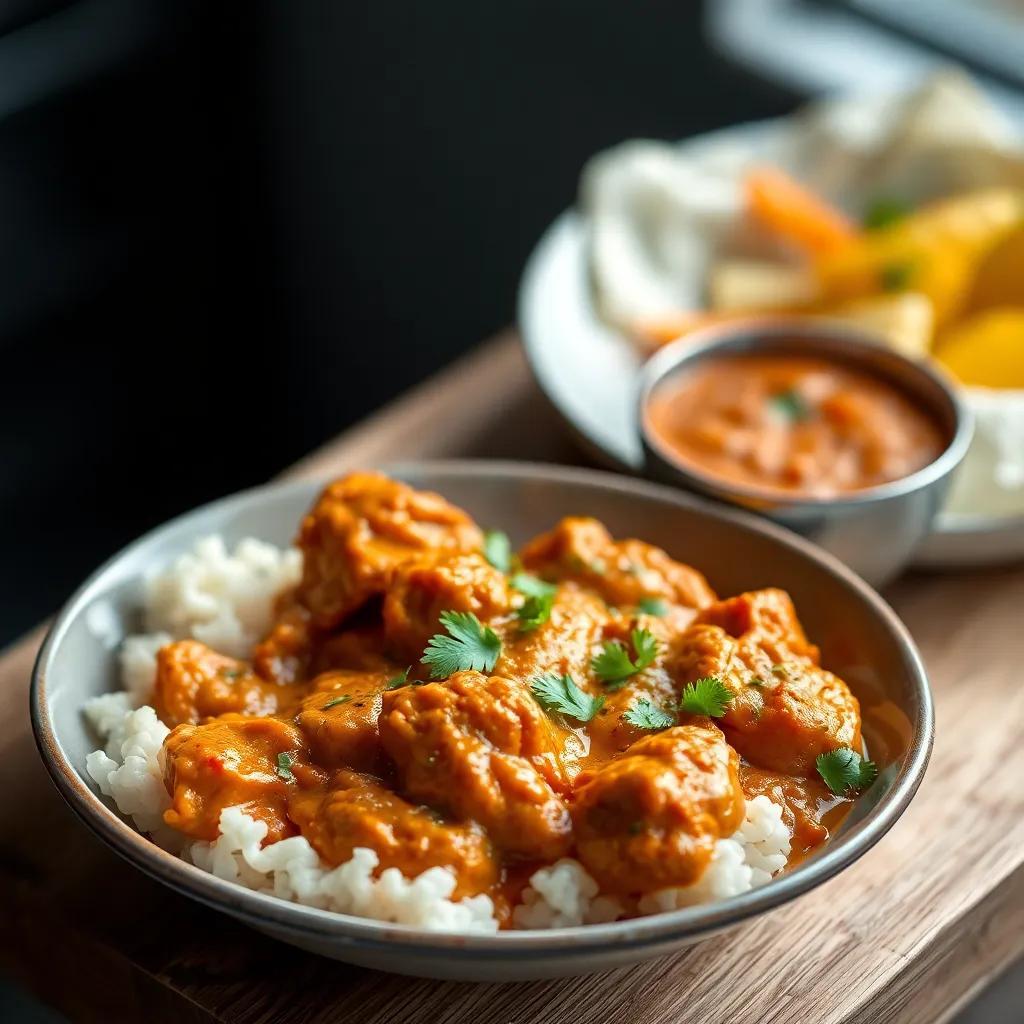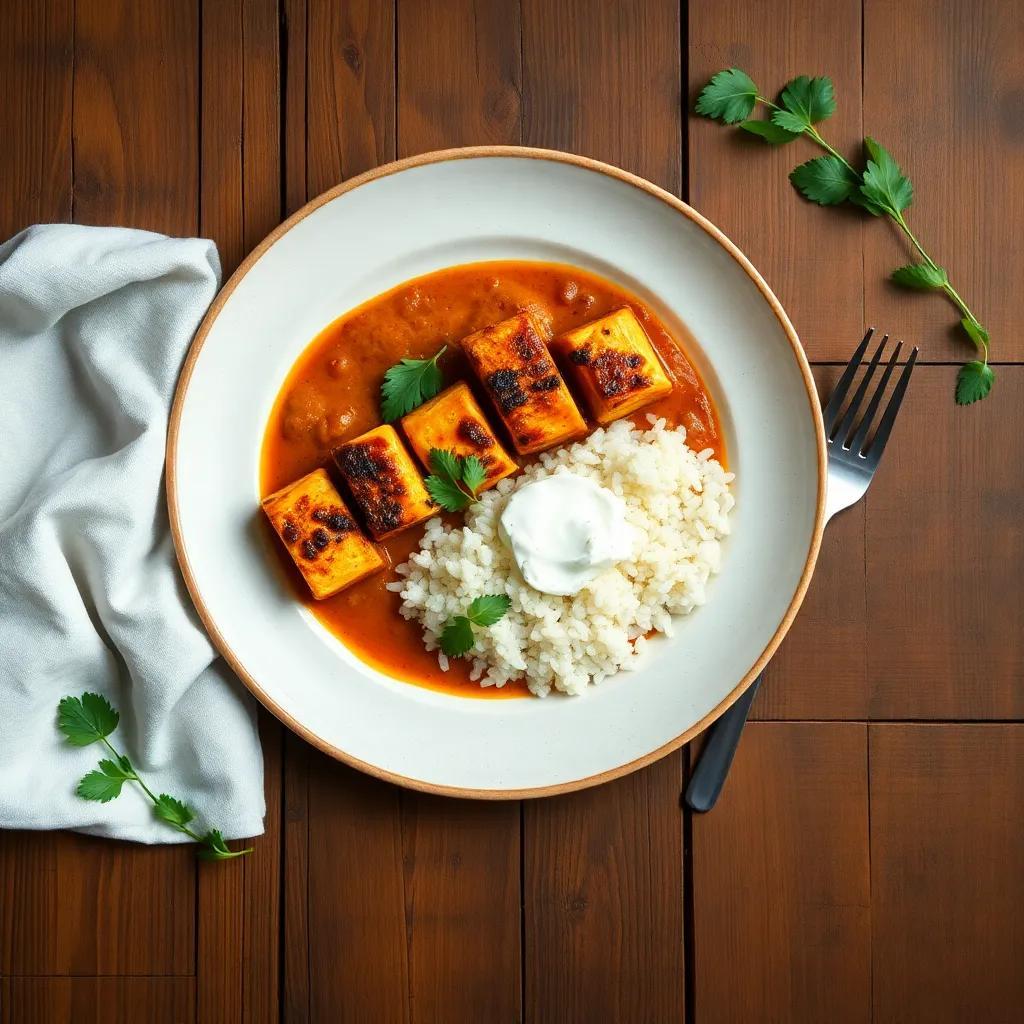Unveiling the Secret to Authentic Biryani: Easy & Flavorful Recipe
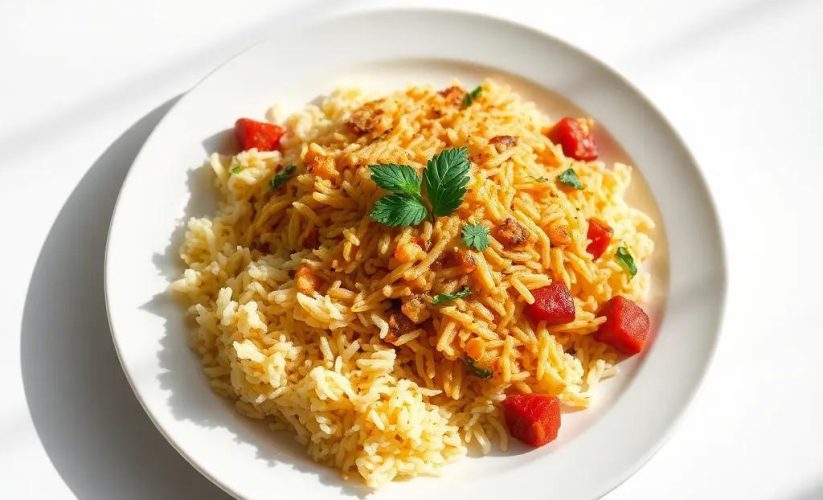
Unveiling the Secret to Authentic Biryani: Easy & Flavorful Recipe
🌍 Cuisine: Indian
⚙️ Difficulty: Medium
Ingredients
Nutrition Facts
550 kcal
Instructions
- Rinse the basmati rice in cold water 3-4 times until water runs clear. Soak rice in water for 30 minutes, then drain.
- Heat oil or ghee in a large heavy-bottomed pot. Add cardamom, cloves, bay leaves, cinnamon stick, and dried red chilies. Sauté until fragrant.
- Add sliced onions and sauté on medium heat until golden brown and caramelized. Remove half the onions and set aside for garnishing.
- Add ginger garlic paste to the pot and sauté until raw smell disappears.
- Add chopped tomatoes, turmeric powder, biryani masala, and salt. Cook until tomatoes soften and oil starts to separate.
- Add the chicken pieces and cook on medium heat until chicken turns white and is half cooked, about 10-15 minutes.
- Stir in the whisked yogurt, mint leaves, and coriander leaves. Cook for another 5 minutes until chicken is tender and the gravy thickens.
- In a separate large pot, bring 3 cups of water to a boil. Add salt and soaked basmati rice. Cook rice until it is 70% done, then drain and set aside.
- Layer the partially cooked rice evenly over the chicken in the pot. Sprinkle the reserved caramelized onions and saffron milk on top.
- Cover the pot tightly with a lid or seal it with dough to trap steam. Cook on low heat (dum) for 30-40 minutes to allow flavors to meld and rice to finish cooking.
- Turn off heat and let it rest for 10 minutes before opening the lid.
- Gently fluff the biryani with a fork, mixing layers slightly to combine meat and rice.
- Serve hot accompanied by raita, salad, or boiled eggs.
Serving Suggestions
- Serve with a cooling cucumber or boondi raita to balance the spices.
- Pair with fresh sliced onions sprinkled with lemon juice and chaat masala.
- Accompany the biryani with a tangy mint chutney for added freshness.
- Garnish with chopped coriander and fried cashews for extra texture and flavor.
- Serve alongside a simple salad of tomatoes, onions, and lemon wedges.
- For a complete meal, offer boiled eggs or a side of vegetable korma.
- Enjoy with a cool glass of mango lassi or traditional Indian buttermilk (chaas).
Table of Contents
- Intro
- Ingredient Notes
- Tips & Variations
- Leftovers & Storage
- Behind the Recipe
- FAQ
- Your Turn in the Kitchen

Intro
Step into the aromatic world of biryani—a dish that has delighted palates for centuries with its rich layers and vibrant flavors. This recipe invites you to uncover the secret behind an authentic biryani experience that’s surprisingly approachable for home cooks. Whether you’re planning a festive family gathering, a weekend celebration, or simply craving a comforting yet impressive meal, this biryani promises to deliver.
What makes this recipe truly exciting is how it balances tradition with ease, allowing you to create a celebratory dish without the usual complexity. The slow-cooked melding of spices, tender chicken, and fluffy basmati rice results in a harmonious blend that feels luxurious but is achievable with straightforward steps. Perfect for sharing, biryani elevates any occasion — from casual dinners to special moments — and pairs beautifully with simple sides that enhance its bold character.
Dive into this flavorful adventure and experience how thoughtful layering and gentle steaming transform humble ingredients into a feast that’s both memorable and deeply satisfying.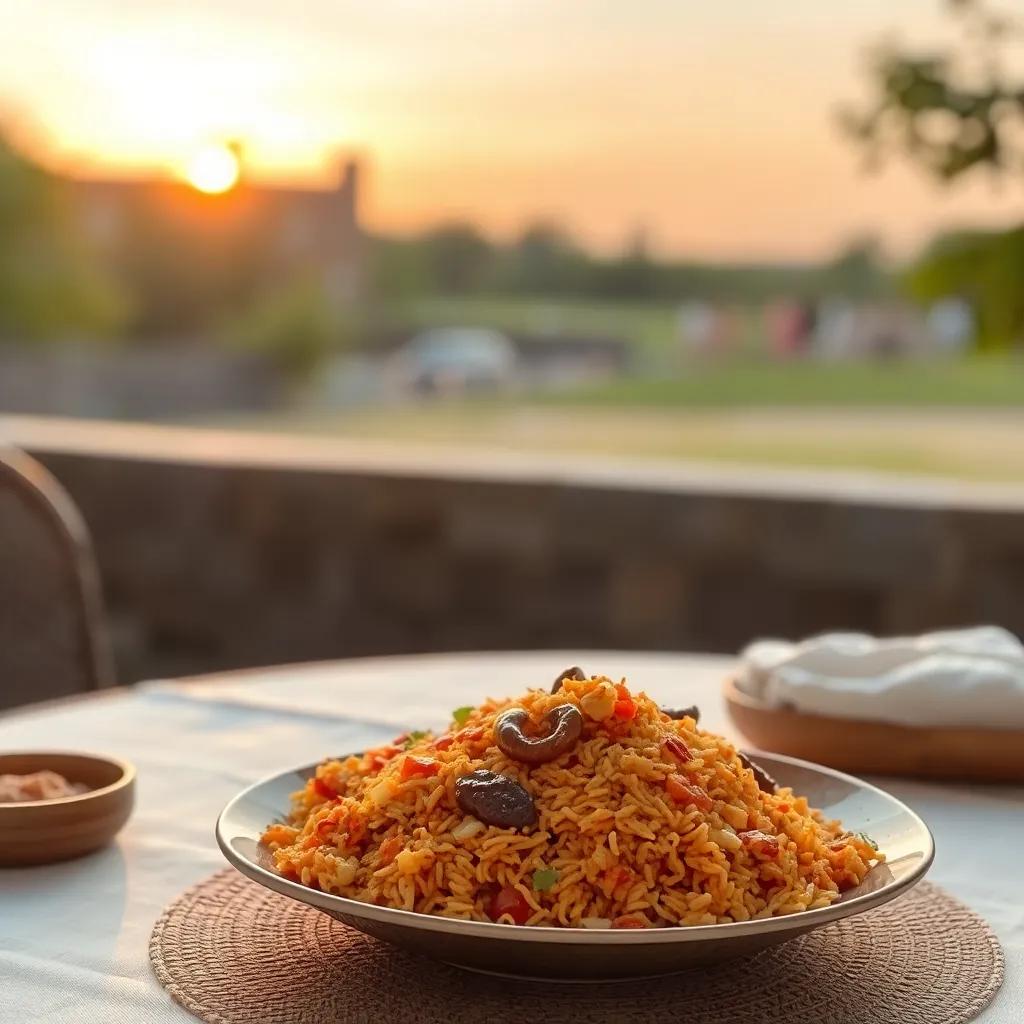
Ingredient Notes
When it comes to crafting an authentic biryani, a few key ingredients truly elevate the dish beyond ordinary rice and chicken. Understanding their role and how to select the best versions can transform your cooking experience and final result.
Basmati Rice:
The foundation of any great biryani is long-grain basmati rice, prized for its delicate aroma, fluffy texture, and slender grains that remain separate after cooking. When shopping, opt for aged basmati if available, as it absorbs flavors better and cooks more evenly without turning mushy. To preserve its unique fragrance and texture, rinse the rice thoroughly to remove excess starch and soak it beforehand—a step that softens the grains and shortens cooking time.
Biryani Masala Powder:
This special spice blend is the heart of biryani’s complex flavor profile. Unlike generic curry powders, biryani masala typically includes a vibrant mix of spices such as cardamom, cinnamon, cloves, nutmeg, and sometimes rose petals or dried pomegranate seeds. Purchasing fresh, high-quality masala powder is essential—it should smell aromatic and not dusty. If you prefer, you can create your own spice blend at home, toasting whole spices then grinding them freshly for maximum potency. For a substitute, garam masala with added coriander, cumin, and a pinch of saffron can work in a pinch.
Saffron Strands:
Though optional, saffron is a luxurious touch that imparts a subtle floral aroma and a beautiful golden hue to the biryani. When using saffron, soak a small pinch of strands in warm milk to release its color and flavor fully before layering it into the rice. To ensure authenticity and prevent disappointment, buy high-grade saffron grown in Kashmir or Iran, keeping in mind that synthetic versions lack the genuine fragrance and flavor. If saffron is unavailable, a tiny pinch of turmeric or food-grade yellow coloring can visually mimic the effect, but the taste won’t quite match.
Ghee (Clarified Butter):
While traditional biryani can be made with oil, ghee adds depth and richness that’s hard to replicate. Its nutty flavor enhances the aroma of the spices as they’re sautéed and lends a luscious silkiness to the chicken and rice. If you don’t have ghee on hand, use a high-quality neutral oil like sunflower or canola, but do consider adding a small pat of butter towards the end to mimic ghee’s buttery richness.
By paying attention to these standout ingredients—choosing them wisely and respecting their unique qualities—you’ll unlock the aromatic layers and authentic flavor that make biryani a beloved classic. Each one plays a vital part in the symphony of tastes that ultimately defines this timeless dish.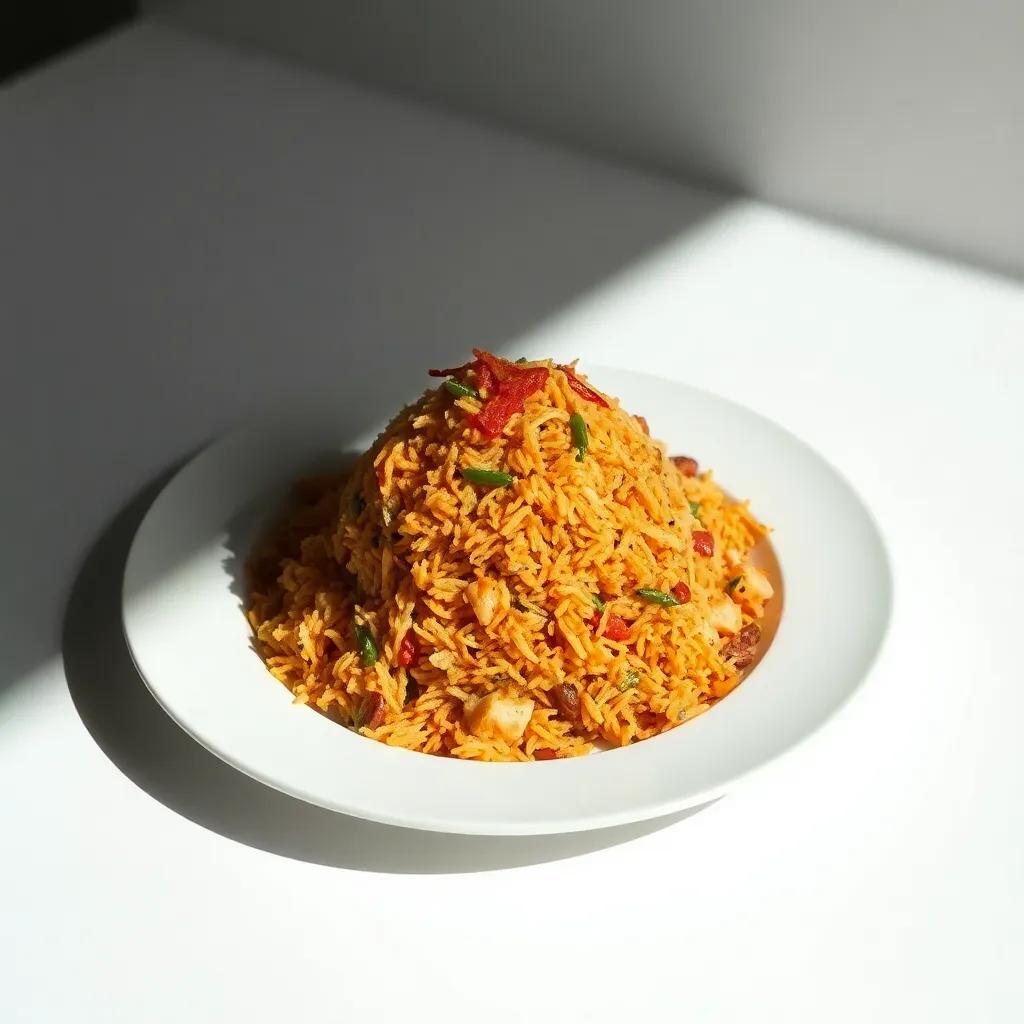
Tips & Variations
Mastering biryani is all about attention to detail and personalization. Here are some pro tips and creative variations to help you tailor this recipe to your tastes and dietary needs without sacrificing authenticity:
- Perfecting the Rice Texture:
Achieving fluffy, separate grains is essential. After soaking the basmati rice, parboil it until about 70% cooked, then quickly drain to stop further cooking. Use a wide heavy-bottomed pot for layering and steaming (dum) to ensure even heat distribution and prevent sticking or burning at the bottom.
- Balancing Spice Levels:
The biryani masala powder is flavorful but can be adjusted to your heat preference. If you prefer milder flavors, reduce or omit the dried red chilies, or swap in paprika for color without the fire. For more heat, add finely chopped green chilies to the marinade or sprinkle chili powder while cooking.
- Enhancing Aroma and Depth:
Frying whole spices gently in ghee at the start releases essential oils for a fragrant base. For an added layer, consider a small handful of fried onions (birista) not only on top but also stirred into the chicken gravy to boost sweetness and texture. A sprinkle of rose water or kewra essence during the final steaming can impart that signature floral note typical of some regional biryanis.
- Customizing Proteins and Vegetables:
While chicken is classic and accessible, you can easily swap in lamb or beef for a richer flavor, adjusting cooking times accordingly. For a vegetarian or vegan version, replace chicken with hearty vegetables like cauliflower, potatoes, and mushrooms. Use plant-based yogurt substitutes such as coconut or cashew yogurt, and opt for oil instead of ghee to keep it vegan-friendly.
- Gluten-Free and Allergy-Friendly Adaptations:
Authentic biryani is naturally gluten-free when prepared with pure spices and rice. Just be cautious with any pre-made spice blends—check labels for hidden wheat or additives. To avoid dairy, substitute yogurt with unsweetened plain coconut yogurt or almond yogurt, which also add a subtle tang.
- Experimenting with Layering and Garnishes:
The layering step is where biryani becomes art. Try adding a thin layer of boiled eggs, halved, between the rice and meat for extra texture and protein. Toasted nuts like cashews or almonds and golden raisins scattered on top introduce delightful bursts of crunch and sweetness. Fresh herbs like extra mint or coriander added just before serving brighten the dish visually and flavor-wise.
- Steaming (Dum) Techniques:
Sealing the pot with an airtight lid or dough trap steam beautifully, but if you don’t have dough on hand, place a clean kitchen towel under the lid to catch condensation and keep the rice from becoming soggy. Keep the heat low and steady to allow gentle cooking and perfect fluffiness.
By embracing these tips and variations, you can confidently put your own signature spin on this iconic dish while preserving its soul. Whether you stick closely to tradition or venture into new territory, the essence of biryani—a harmonious blend of spices, aroma, and love—will always shine through.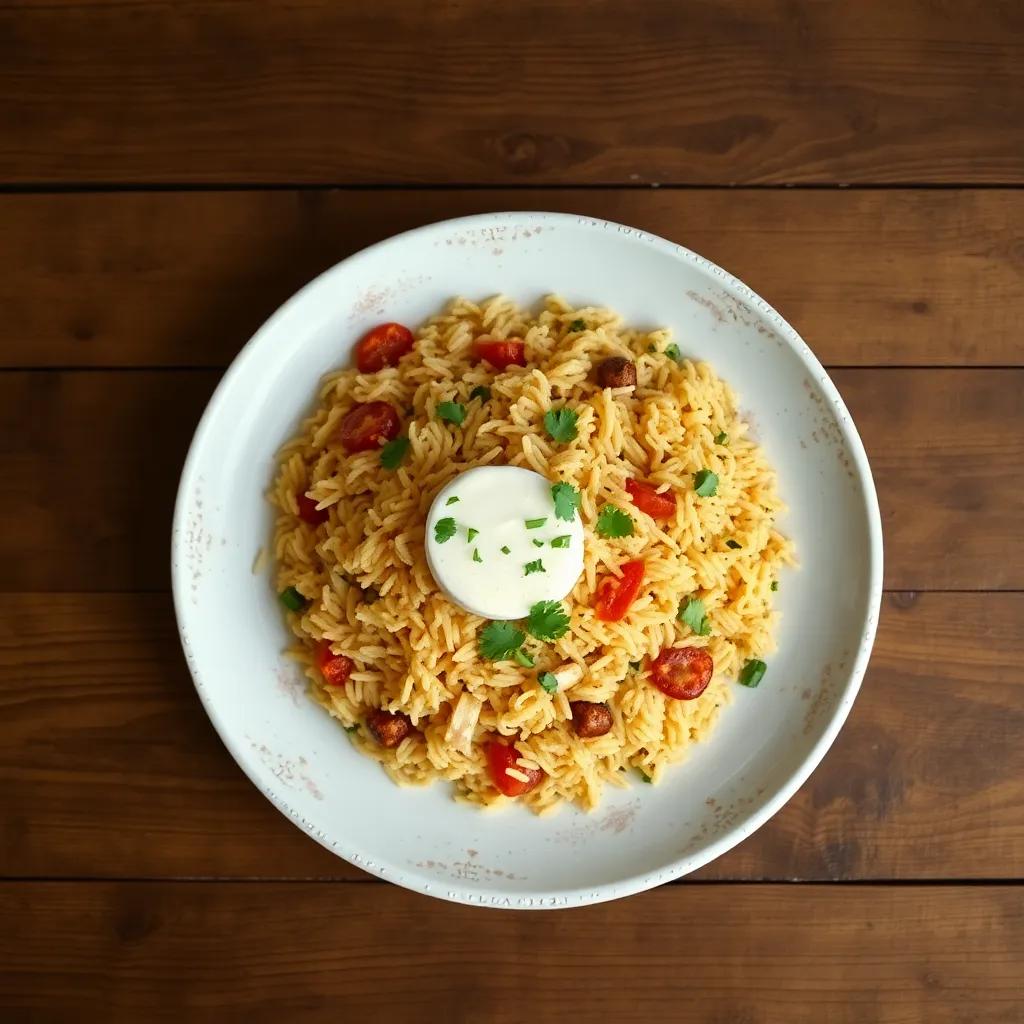
Leftovers & Storage
After savoring the fragrant layers of your homemade biryani, you might find yourself with delicious leftovers worth preserving. Proper storage not only keeps those flavors vibrant but ensures your next meal tastes just as delightful as the first.
To store leftover biryani, allow it to cool to room temperature but avoid leaving it out for more than two hours to prevent bacterial growth. Transfer the biryani into an airtight container—glass or BPA-free plastic works well—to maintain moisture and prevent the absorption of other fridge odors. For best results, portion the biryani into meal-sized containers so you can reheat only what you need without repeatedly exposing the rest to air and warmth.
In the refrigerator, your biryani will stay fresh and safe to eat for up to 3 to 4 days. When reheating, sprinkle a little water over the biryani to restore moisture, cover loosely with a lid or microwave-safe wrap, and heat gently to avoid drying out the rice or toughening the chicken. Stovetop reheating on low heat with a splash of water or broth and a tight-fitting lid also revives the biryani beautifully, steaming it back to life while preserving its tender texture.
For longer storage, biryani freezes exceptionally well. Place cooled biryani in freezer-safe containers or heavy-duty zip-lock bags, removing as much air as possible before sealing to prevent freezer burn. Label each container with the date, and plan to consume within 2 to 3 months for the best flavor and texture. When thawing, defrost overnight in the refrigerator, then reheat gently as described above.
Leftover biryani is perfect for meal prepping weekday lunches or last-minute dinners, delivering the comforting complexity of spices with minimal effort. You can also pack it cold as a flavorful picnic or office lunch—just remember to keep it refrigerated until ready to heat or eat.
With these simple storage tips, you can extend the life of your biryani and enjoy its magic well beyond the first serving, making every meal a celebration of rich aromas and layered goodness.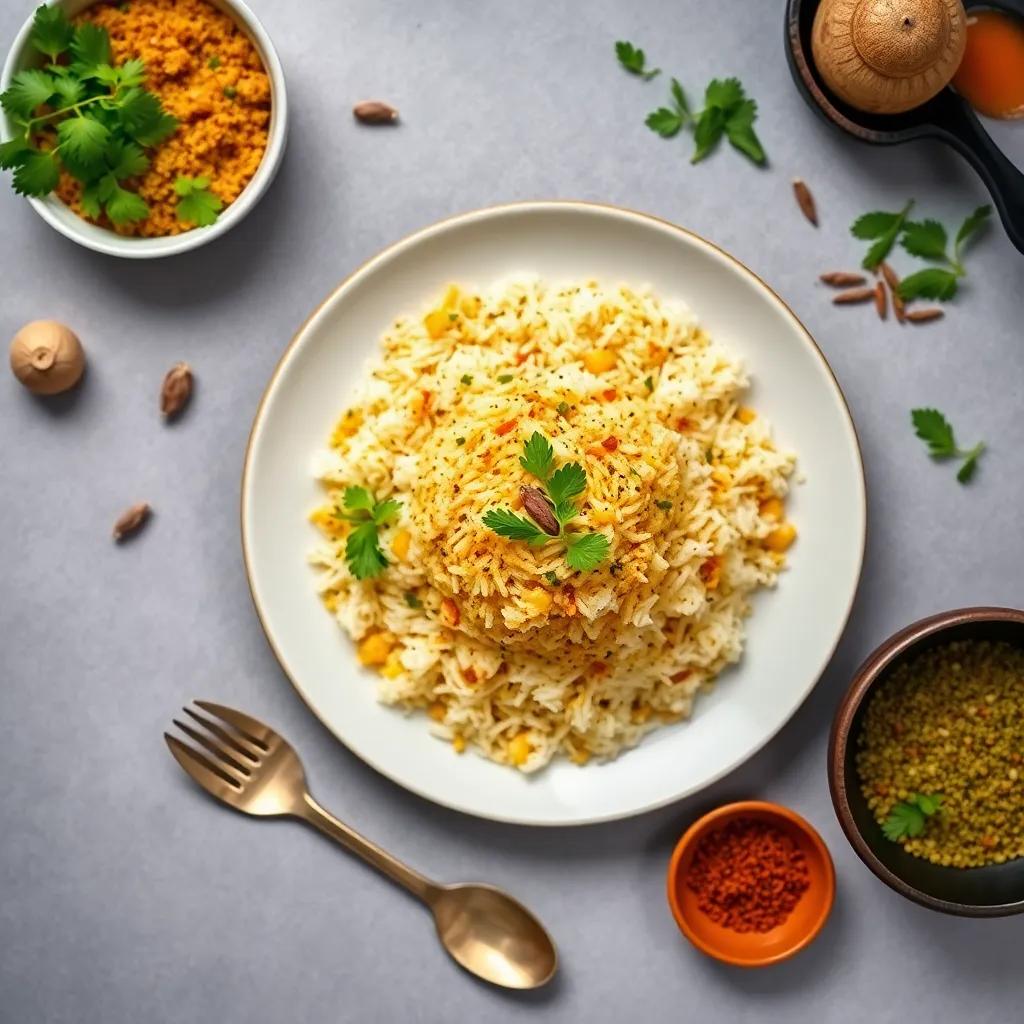
Behind the Recipe
Biryani is much more than just a flavorful rice dish—it is a culinary treasure steeped in centuries of history, culture, and tradition. Its origins trace back to the royal kitchens of the Mughal Empire in India, where skilled cooks sought to marry Persian rice cooking techniques with the bold spices and ingredients native to the Indian subcontinent. This fusion gave birth to biryani, a dish that symbolized opulence, celebration, and communal feasting.
Over time, biryani has evolved regionally across India and beyond, with each locale adding its own distinctive twists—whether it’s the fragrant saffron-infused Awadhi biryani of Lucknow, the fiery Hyderabadi style layered with marinated meat, or the coastal Malabar variation featuring aromatic spices like star anise and curry leaves. Despite these nuances, the heart of biryani remains unchanged: the meticulous layering of fragrant rice and richly spiced meat, slow-cooked together to create a harmonious blend of textures and flavors.
This recipe reflects that heritage by balancing authenticity with accessibility, inviting cooks of all skill levels to experience the magic of “dum” cooking—the gentle steam that allows aromas to mingle and deepen. Personally, I remember first encountering biryani at family gatherings where the atmosphere was filled with excitement and the tantalizing aroma of spices simmering for hours. It’s a dish that transcends everyday meals, often reserved for special occasions, where sharing it brings people closer.
Through this recipe, the aim is to honor biryani’s rich cultural roots while embracing the home kitchen’s rhythm—making it less intimidating but no less enchanting. Each step, from toasting whole spices to layering saffron-soaked rice atop tender chicken, is an homage to generations of cooks who crafted this beloved dish. By preparing it yourself, you’re not only creating a delicious meal—you’re connecting with a vibrant legacy of flavor, community, and culinary artistry.
FAQ
Can I make biryani vegetarian or vegan-friendly?
What’s the best way to store leftover biryani?
How do I reheat biryani without losing its texture?
Is it okay to use store-bought biryani masala instead of making my own spice mix?
Can I prepare biryani in advance for a party or special occasion?
What rice should I use to get the perfect biryani texture?
Can I substitute chicken with other proteins like beef, lamb, or seafood?
Your Turn in the Kitchen
And there you have it—the secret to crafting an authentic biryani that’s both easy and bursting with flavor. This recipe invites you to dive into a culinary tradition without the fuss, delivering rich aromas and tender, spiced goodness right in your own kitchen. Whether you’re a seasoned cook or a curious beginner, it’s a dish that promises satisfaction with every bite.
We’d love to hear how your biryani turns out! Feel free to leave a comment, share your rating, or tell us about your own special twists. After all, the best recipes grow and evolve when they’re shared—and that’s what makes cooking truly magical.


